Background
Polyimide matrix composites (PiMCs) extend the role of traditional polymer matrix composites (PMCs) into high temperature environments due to the exceptional thermal and mechanical properties of polyimide. To fully explore the usage of PiMCs at high temperatures (around 300 oC), we aim to have a better understanding of the mechanical and thermal behaviors of both the polyimide matrix and its composites at elevated temperatures. In particular, we are interested in the time and temperature dependent mechanical behavior of the polyimide HFPE-II-52 at high temperatures, the moisture degradation mechanisms and their effect on the mechanical properties and special failure modes, such as instable void growth, blistering and delamination of both the neat resin and laminates under hygrothermal loadings.
Viscoelasticity and Viscoplasticity
Understanding the time and temperature dependent mechanical behavior of polyimide at high temperature is essential to prediction of the high temperature performance of PiMC. We have performed three types of tension tests on HFPE-II-52 polyimide dogbone samples, including creep recovery, multistep stress relaxation and constant loading rate tests. The experiments were all performed in a range of temperature from 285 oC to 330 oC. A small strain constitutive model was then developed based on the experiment, combining linear viscoelasticity using a Prony series representation for the relaxation modulus with viscoplasticity incorporating strain hardening and softening and a power law flow potential. Material parameters were identified for HFPE-II-52 polyimide at high temperature. Sample results of experiment and model comparison are shown below.
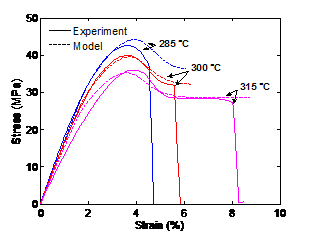
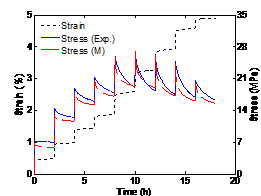
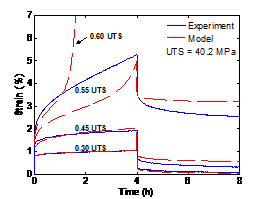
The constitutive equations have been implemented into commercial FE code ABAQUS as a user defined material model. To demonstrate an application, we simulated a fiber reinforced HFPE-II-52 polyimide matrix unidirectional composite under axial shear loading at 315 oC. A unit cell model was used and the yield stress was determined and compared with experimental results.

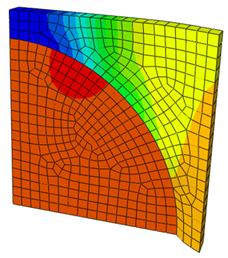
Moisture Degradation
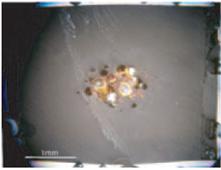
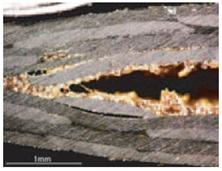
Polyimides or PiMCs subject to storage in high humidity environments or to operation in the presence of moisture at high temperatures are known to suffer mechanical property degradation, which can lead to failures such as blistering and/or delamination.
One of the underlying mechanisms of moisture degradation is hydrolysis. Hydrolytic degradation will be reflected in reductions in mechanical properties such as moduli, glass transition temperature and flow strength. The process of hydrolysis is generally time and temperature dependent. We are currently performing experiments with HFPE-II-52 polyimide exposed to fully moisture saturated conditions at temperatures from 175 oC to 250 oC, in a time period ranging from 1 hour to 1 week. The samples are then tested in compression to measure the reduction in room and elevated temperature modulus and strength. A model is being developed in which the bond breaking rate follows an Arrhennius equation for temperature. The experiments and modeling provide a means for the evaluation of the effects of moisture degradation and for incorporating them into life prediction models.